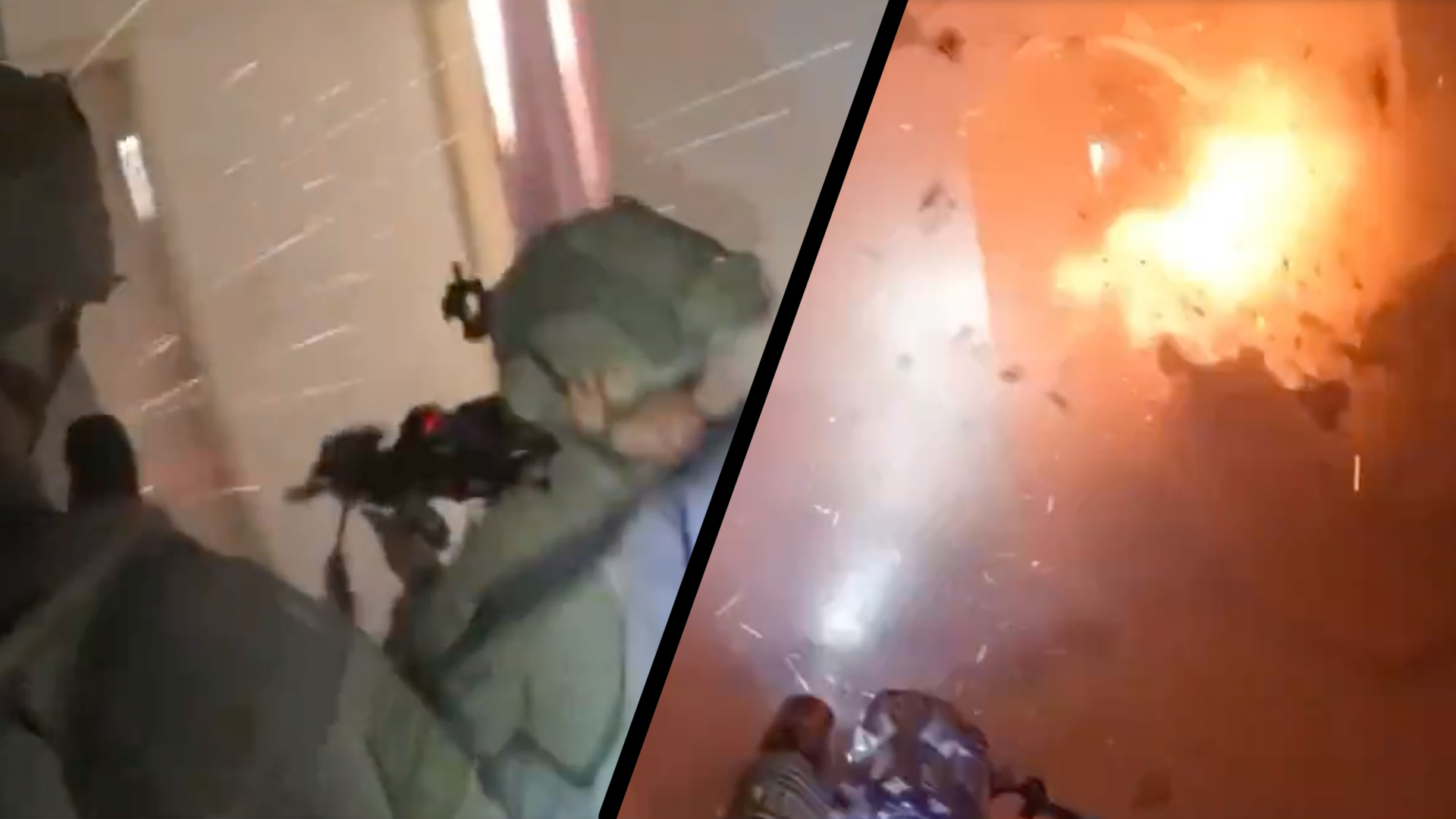

A video posted to Twitter showed a narrow escape from point-blank gunfire through a wall as an Israel Defense Forces (IDF) soldier started to walk down a hallway during close-quarters battle, or CQB. The video was posted today and hit almost 3,000 views within the first hour.
The video was posted by Knukli (@11Knuk123), a self-reported former IDF soldier. The user posted a translation that was matched through translation software, which breaks down the IDF soldier’s comments about coffee cups, indicating someone was recently in the room.
Task & Purpose spoke with a Marine special operations veteran who has conducted many “high-value target” raids in combat and has a resume more than adequate to weigh in on all things close-quarters battle. He requested his name not be used due to his sensitive work.
Subscribe to Task & Purpose today. Get the latest military news and culture in your inbox daily.
On his initial assessment of the video, he said the IDF soldiers are moving “pretty casually” through the apartment as a fire team, suggesting they’re not a specialized unit or highly trained in close-quarters battle.
“Their lack of urgency would suggest their clearing operation had gone relatively unopposed at the time we see the video from,” the Marine veteran said. “It seems the enemy was not in a particularly well-defended position and when they felt like they were going to be discovered, initiated the ambush by firing through the doorway and through the walls.”
React to contact is a battle drill taught at the most basic levels in combat arms units in the U.S. military. The three most important principles of close-quarters battle are speed, surprise, and violence of action, and many use the old saying, “slow is smooth, smooth is fast.” You definitely don’t loiter in a room if the building isn’t cleared.
The Marine veteran said the IDF soldiers had a “pretty overwhelming sense of complacency,” noting their weapons were, for the most part, held at the low-ready position. The whole team was crowded into a main entry room, and one of the soldiers had turned his back to a doorway the enemy was behind.
“This wasn’t a hard hit on a specific target, and it shows that it was likely a second-line unit that’s acting more like they’re just checking on buildings already deemed clear,” the Marine veteran said. “Regardless, the biggest problem is that nobody is maintaining discipline and the complacency nearly killed them.”
The Marine veteran said the video highlights how many treat CQB as if it’s the only viable tactic, a big problem in the military and training industry. CQB is incredibly taxing on the units performing it and should be treated as a last-resort tactic. He said conventional units should be focused on cordoning areas and the “finding and fixing efforts.” Enemies in a fixed location can be eliminated with drones, artillery, or even organic fire support.
If the enemy is fixed in a dense population area or hostages are a concern, a unit specializing in CQB should be tasked to execute the assault.
“The bottom line is that CQB is an incredibly time and energy-consuming process and Israel is learning what U.S. forces learned in Iraq, though we’ve adapted our tactics because of it,” the Marine veteran said. “In campaigns with fluid frontlines, entirely too much is spent clearing the same structures. When the enemy is vastly outnumbered and materially outmatched it’s dangerously easy for junior enlisted soldiers to become overconfident in their control of the battle space.”
Although there is plenty to critique about the soldier’s situation and response, they did do some things right.
“Credit where it’s due, the individual soldiers acted with enough discipline to not fire reflexively as they continued to run in front of each other’s muzzles,” the Marine veteran said. “It also appears they flowed back out of the room quickly while suppressing with rifle fire and at least one grenade.”
The Marine veteran said the soldiers, fortunately, had luck on their side, as a more disciplined enemy could have waited until the soldiers exposed themselves and killed or wounded multiple of them in the opening salvo, which would have required a rescue attempt and likely more soldiers killed in the process.
The latest on Task & Purpose
- Air Force fires two medical commanders at Joint Base Charleston
- Navy fires commodore of Naval Special Warfare Group Eight
- Families at Edwards Air Force Base living in RVs for housing relief
- Niger cuts ties with US military
- Navy has fired at least 3 commanding officers for DUIs in 2024